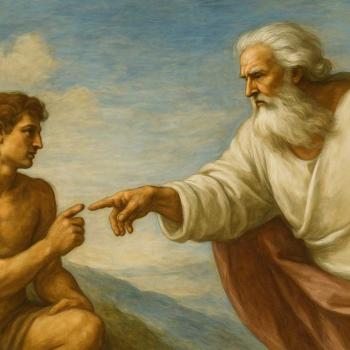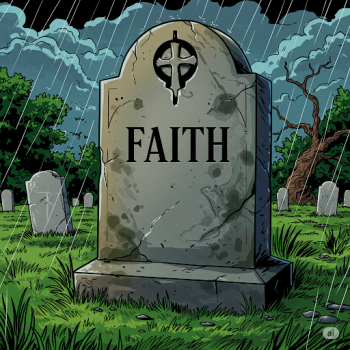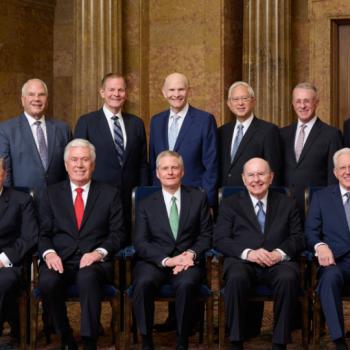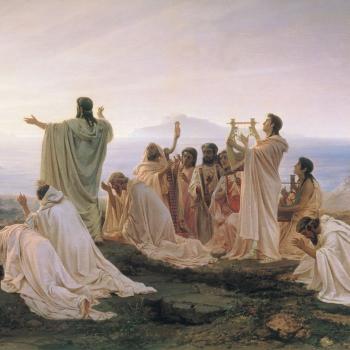
I’ve thoroughly enjoyed General Conference thus far. The talks have been uniformly excellent, although I’m sad to hear that Elder Jeffrey R. Holland is home sick with COVID and also to realize, in that light, that he won’t be speaking this weekend. He is always a favorite, and not merely with me.
I was absolutely delighted to hear the admonition from Elder Gary E. Stevenson of the Quorum of the Twelve Apostles, the first speaker in this morning’s first session of the annual general conference of the Church of Jesus Christ of Latter-day Saints, that we pay more attention than we typically have in the past to the celebration of Easter. Elder Stevenson remarked that there seems to be a growing inclination among at least some Latter-day Saints to place greater emphasis on Easter; he specifically mentioned Palm Sunday, about which I posted a partial blog entry just yesterday.
I agree that more and more of us have been urging greater personal and family focus on Easter, not relying merely upon a single annual sacrament meeting to serve that purpose. As minor evidence for that growing emphasis, I offer my own Deseret News columns “The days leading up to Easter Sunday” (2011) and “Holy Week aids Easter reflections” (2014). As more significant evidence, I call your attention to Greater Love Hath No Man: A Latter-day Saint Guide To Celebrating the Easter Season, a just-published new book from Eric D. Huntsman and Trevan G. Hatch. I haven’t actually seen it yet; my friend Eric Huntsman, who is currently serving as an administrator at BYU’s Jerusalem Center for Near Eastern Studies, called it to my notice during our just-completed visit to Israel. My wife and I had at one point discussed compiling some such book; I’m very pleased that Brothers Huntsman and Hatch appear to have done it.
I’m now going to share with you a few more passages that have caught my attention in Chris Ferrie and Geraint F. Lewis, Where Did the Universe Come From? And Other Cosmic Questions: Our Universe, from the Quantum to the Cosmos (Naperville IL: Sourcebooks, 2021):
In the first, Professors Ferrie and Lewis allude to a currently popular view of the very beginning of the universe:
The idea that the universe came from nothing, a true nothing with no space and no time, is rather neat. It leaves no loose ends to tie up! Any question about the origin of the universe will most likely contain the statement “from nothing.” Like a frustrated parent shouting “just because” to the endless questioning of a child.
The zero-energy needs of the from-nothing universe add to the neatness. Another thing that doesn’t need to be explained is that Heisenberg says the universe can last forever. The from-nothing universe seems like a winner. Everybody’s happy! Well, not everybody! While seemingly neat, the from-nothing hypothesis is horribly unsatisfying to many scientists. Common sense, which itself is a terrible guide to understanding the scientific workings of the very small and very large, tells that there must have been a “before” and that something caused the universe to come into being. But at a time before time existed, what does before even mean?
In fact, most cosmologists are not satisfied with the from-nothing universe origin theory, and the search for alternative explanations has continued unabated for several decades. (34)
But will we, with current scientific tools or even in this mortal life, ever be able to resolve the question? (See, in this context, my recent blog entry — also drawn from the book by Ferrie and Lewis — entitled “‘Frankenstein Mathematics’ and the Unimaginable.”). It’s impossible to say at this point. But we should be very much humbled by what we don’t know:
Beyond this point, the singularity, there may be an entire past we have yet to imagine. (37)
My third quotation from Professors Ferrie and Lewis:
The energy that kept the electrons zipping in the early stages was due to collisions with the immense sea of radiation: high-energy gamma rays, X-rays, and ultraviolet light and radiation left over from the fires of the Big Bang itself. If any electron did manage to grab onto an atomic nucleus, a collision with one of the huge numbers of marauding photons, the particles of light, was inevitable and would rip them apart again.
It was the expansion of the universe that cooled these photons from their high energies. As the photons cooled, collisions with the electrons eased, and the electrons became more sluggish. At last, the first real atoms could form. This radiation remains and continues to cool, no longer interacting with atoms but always lurking in the background. We still see this radiation today, but it has now cooled from the extreme temperatures in the Big Bang to a few degrees above absolute zero. Instead of being the highest energy photons, that radiation exists closer to the radio part of the electro-magnetic spectrum and is known as cosmic microwave background radiation. It is the oldest light we can see. (39)
Albert Einstein apparently always disliked the notion of an expanding universe. And the prominent British astronomer Sir Arthur Stanley Eddington once remarked that,
Philosophically, the notion of a beginning of the present order of Nature is repugnant to me. . . . I see no way around it; but . . . I should like to find a genuine loophole.
Even in 1949, the great British astronomer and astrophysicist Sir Fred Hoyle, argued for an ageless and stable universe, denouncing Georges Lemaître’s idea of a primordial explosion as
the hypothesis that all the matter in the universe was created in one big bang at a particular time in the remote past.
And hence, using what Hoyle intended as a pejorative dismissal, we still speak today of the “Big Bang.” As far as I knew when I was in high school, Hoyle’s proposed “steady state” alternative to “the Big Bang theory” continued as a live and plausible option, and it still had defenders. At some point, though, that stopped. One factor, of course, was the 1964 discovery, by the American physicist Arno Penzias and the American radio astronomer Robert Wilson, of cosmic microwave background radiation, which is understood as important evidence for a hot early universe and, thus, for the “Big Bang” (of which it seems to be something like an “echo”). In 1978, Penzias and Wilson were awarded the Nobel Prize for Physics for their discovery. While I was in high school, though, I don’t think that the news had quite trickled down to us yet.
There is virtually universal consensus today that the universe that we know, including all matter and even time itself, originated in a primeval event beyond which we cannot see. Still, though, I like these words from Dr. Penzias:
The best data we have (concerning the Big Bang) are exactly what I would have predicted, had I nothing to go on but the five books of Moses, the Psalms, the Bible as a whole.”
If there are a bunch of fruit trees, one can say that whoever created these fruit trees wanted some apples. In other words, by looking at the order in the world, we can infer purpose and from purpose we begin to get some knowledge of the Creator, the Planner of all this. This is, then, how I look at God. I look at God through the works of God’s hands and from those works imply intentions. From these intentions, I receive an impression of the Almighty.

















